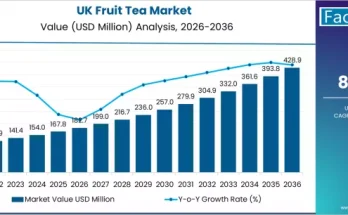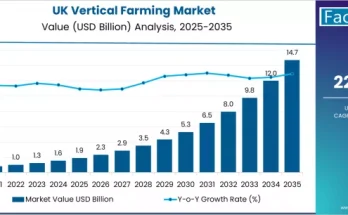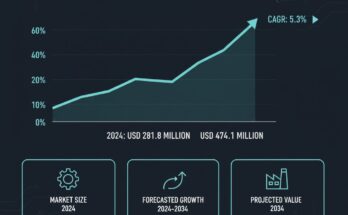A thorough analysis projects that the global marine retinol market will grow from USD 280.0 million in 2025 to USD 450.0 million by 2035, at a compound annual growth rate (CAGR) of 4.8% over the next decade. This robust trajectory demonstrates accelerating demand for marine-derived vitamin A derivatives, positioning marine retinol as a strategic ingredient in cosmetics, nutraceuticals, and pharmaceutical applications.
Key Market Drivers & Growth Catalysts
Demand is driven by rising consumer interest in natural, sustainable, and high-potency bioactives for skin care and wellness. Marine sources such as fish liver oil, algal extracts, and other marine biomass are increasingly tapped for their retinol content, offering benefits such as anti-aging, skin renewal, and immunity support. The cosmetics industry especially sees marine retinol as a premium active, aligning well with clean-label, sustainable beauty trends.
Advancements in extraction and purification technologies are enhancing the yield, purity, and bioavailability of marine retinol. These innovations help ingredient suppliers produce standardized, stable extracts that meet regulatory and formulation requirements, reducing variability and improving compatibility with high-end cosmetic or nutraceutical products.
Click Here for Sample Report Before Buying: https://www.factmr.com/connectus/sample?flag=S&rep_id=8729
Application & Product Outlook
By source, fish liver oil remains dominant and expected to contribute about 60% share of the market, given its favorable retinol content, extraction efficiency, and established supply chains. Alternative sources such as algal retinol are also gaining traction due to biotech innovations, offering a scalable, sustainable option.
In terms of application, cosmetics leads by a wide margin with roughly 65% of market share, driven by premium anti-aging formulations, serums, creams and skincare lines that incorporate marine retinol for its proven efficacy and clean-beauty appeal. Nutraceuticals account for about 25% of demand, where marine retinol is used in dietary supplements targeting vision, skin health, and general wellness. Pharmaceuticals hold the remaining 10%, where marine retinol is applied in medical or therapeutic formulations subject to stricter regulatory standards.
Regional Insights & Market Opportunities
Growth is particularly strong in regions with mature beauty and wellness industries as well as emerging demand for premium skincare. Regions like East Asia, Western Europe, and South Asia / Pacific are forecast to be major growth hubs, thanks to expansive cosmetics markets, strong consumer spending power, and regulatory acceptance of marine-derived actives. Emerging economies are also ramping up adoption as consumer awareness increases and local processing capabilities improve.
Competitive Landscape & Strategic Trends
Key industry players include ingredient suppliers with expertise in marine extraction and biotechnological retinol production. Firms are investing in advanced purification systems, encapsulation / stabilization technologies, and bioactive standardization protocols to deliver high-quality, stable marine retinol suitable for premium formulations.
Trendwise, there is growing collaboration between ingredient suppliers and cosmetics or nutraceutical brands to develop tailored marine retinol formulations. These partnerships allow co-development of deliverables such as encapsulated or oil-based retinol formats that optimize stability, bioavailability, and sensory performance in skincare and wellness products.
Market Challenges & Risks
Despite strong growth potential, there are some constraints. Extraction costs and raw material availability, including dependency on marine resources or seasonal fish liver procurement, can pose supply variability and cost pressures. Also, regulatory compliance in various jurisdictions may require rigorous certification or testing to approve marine retinol in cosmetics or dietary supplements. Premium pricing and competitive alternatives may limit adoption in cost-sensitive markets.
Forecast & Strategic Recommendations
Given the forecast growth from USD 280.0 million in 2025 to USD 450.0 million by 2035 at ~4.8% CAGR, this is a strong opportunity space for ingredient manufacturers, cosmetic formulators, or supplement brands. Ingredient suppliers should focus on expanding capacity (especially from algal or other marine sources), improving extraction efficiency, and offering standardized, high-purity retinol formats to address emerging markets.
Brands in cosmetics or nutraceutical sectors should consider integrating premium marine retinol into anti-aging or wellness products aimed at regions with high consumer demand for natural, sustainable actives. Building supply chains or partnerships in growing regions will help capitalize on demand.
Browse Full Report: https://www.factmr.com/report/marine-retinol-market
Call to Action for Buyers
This market report provides a comprehensive view: historical data, market segmentation (by source, application, region, form), competitive landscape, regulatory trends, and forecast through 2035. It offers detailed insights and strategic guidance to evaluate investment, product development, or market entry decisions.
Securing this report now gives access to data-backed forecasts, competitive benchmarks, and actionable market intelligence that can support marketing, product formulation, or strategic planning. With the market projected to reach USD 450 million by 2035, this is the opportune time to analyze and leverage growth in marine retinol applications.



